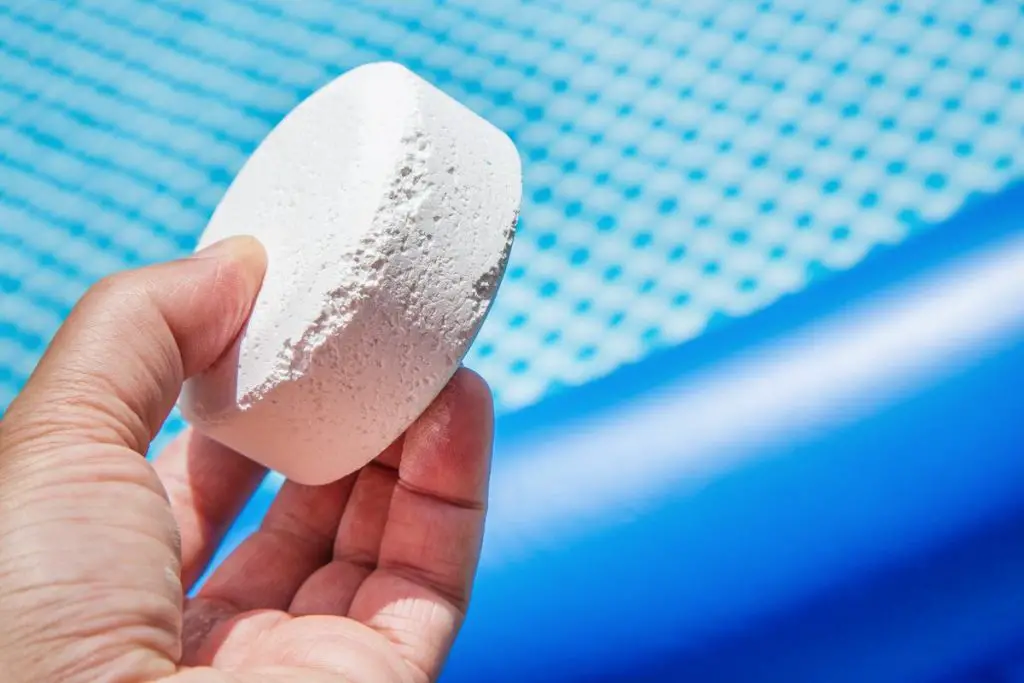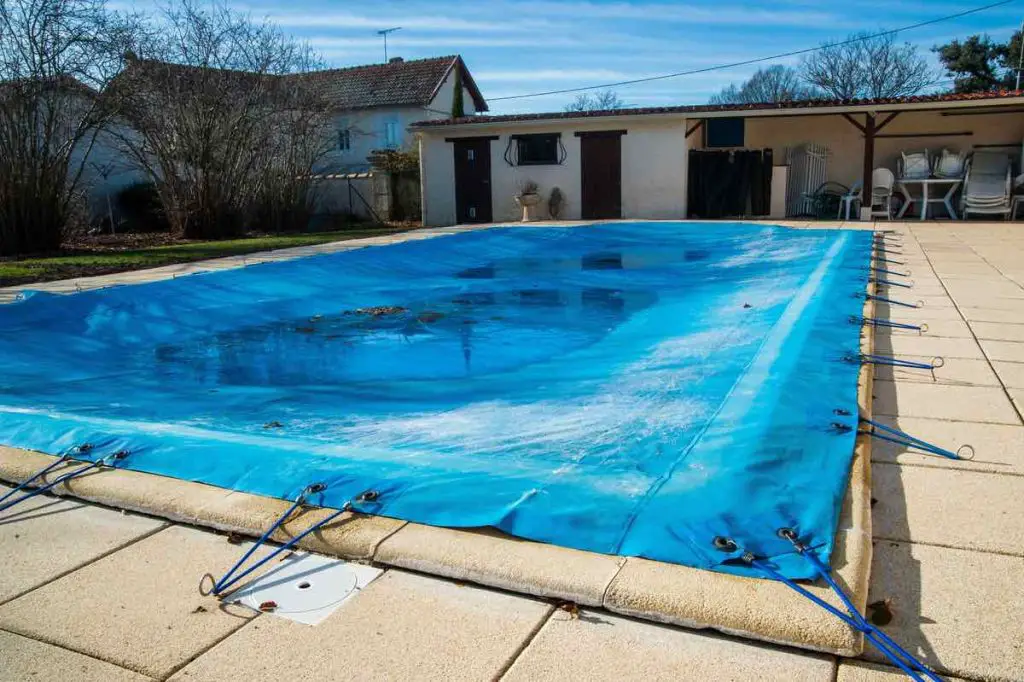Chlorine is perhaps the most popular pool chemical because it sanitizes the water throughout the year. Although the water is colder during the winter, it’s crucial that you know how much chlorine to use. Liquid, powder, and tablet chlorine are used in different amounts for winterizing swimming pools.
To winterize a pool, you should use one gallon of liquid chlorine per 10,000 gallons of water. If you use powder chlorine, use one pound per 10,000 to 15,000 gallons of water, depending on its chlorine concentration. Those who prefer tablets should use one tablet per 10,000 gallons of water.
In this article, we’ll dive into the amount of chlorine you need to winterize your pool, whether or not chlorine is needed weekly for maintenance purposes, and what other chemicals you need to winterize the water.

How Much Chlorine Should You Use to Winterize a Pool?
You should use enough chlorine to get your pool to 4 ppm to winterize it. In the Swim suggests adding one pound or gallon of chlorine to the pool per 10,000 gallons of water. However, some chlorine has higher concentrations of calcium hypochlorite or sodium hypochlorite, which means you’ll need less of it.
Always check the packaging to know how much chlorine you need to winterize your swimming pool to 4 ppm. If there’s not enough chlorine in the water, you’ll encounter all sorts of issues. Let’s review what can happen when you winterize a pool without using enough chlorine in the following section.
Quick Tip: Cover the pool with a winter cover (not a solar cover) to preserve the chemicals during the fall and winter.
Do You Need to Put Chlorine in Your Pool During the Winter?
You need to put chlorine in your pool during the winter because it prevents excessive bacterial growth. Although the water is colder, some bacteria thrive in stagnant swimming pools. Make sure you combine chlorine with algaecide to prevent algae blooms from showing up throughout the colder months of the year.
Pinch a Penny recommends keeping your pool’s chlorine between 2 ppm to 4 ppm. Test your pool’s chlorine levels weekly to know if you need to add more. Remember to consult the manufacturer’s guidelines since all chlorine products use unique dosages. If your chlorine gets too high, it can stain the pool.
Here’s what happens if you don’t put chlorine in your pool during the winter:
- You’ll undoubtedly have to remove large amounts of algae. Homeowners often make the mistake of thinking that cold pools can’t get algae blooms. Unfortunately, failure to add enough chlorine will create algae cakes and spores all over the place. You could also risk staining the pool with green or black algae.
- There’s a chance you’ll have to do a partial drain and refill. If there’s too much algae in the water, you might have to add so much chlorine that it could damage the liner. Instead, you’ll have to drain about one to two feet of water and fill it with a garden hose (or well water) to dilute the algae.
- You’ll need to put a lot of additional chemicals into the water before opening it the following summer. If you maintain the chlorine in your pool during the winter, you’ll be good to go in the summer. Failure to do so means you’ll like have to use multiple algae removers and high quantities of chlorine shock.
What Other Chemicals Are Needed to Winterize a Pool?
Other chemicals needed to winterize a pool include pH adjusters, algaecides, scale preventatives, alkalinity adjusters, and calcium hardness. Chlorine works best when all other pool chemicals are maintained. If the pH and alkalinity are misaligned, the chlorine won’t be nearly as effective.
Let’s look at each of these five chemicals:
- PH adjusters: Most pH adjusters include soda ash and muriatic acid. If you have a vinyl liner swimming pool, it’s best to stick to less harsh chemicals. We recommend using dry acid. Dilute the dry acid in a five-gallon bucket with a couple of gallons of water before dumping the solution into the pool.
- Algaecide: The HTH Super Algae Guard is a high-quality solution that prevents algae from growing for several months to come. One bottle is enough to treat up to 15,000 gallons of water for up to a year. You’ll have no problem using this algaecide during winter, summer, spring, and fall.
- Scale preventative: Winter often builds calcium on the walls. If you don’t want to brush your pool multiple times weekly, you could add a scale buildup preventative. There’s no way to remove calcium from the water without draining and refilling a couple of feet. However, using a scale buildup chemical will help it look better.
- Alkalinity adjusters: Your pool’s alkalinity moves with its pH. When the pH goes up, so does the alkalinity. The same applies to reducing the pH and alkalinity. While muriatic or dry acids can be used to lower the alkalinity, we suggest using baking soda or an alkalinity decreaser equivalent.
- Calcium hardness: All pools react differently to calcium because it prevents stains and deterioration. A plaster pool without enough calcium will crumble apart, whereas a vinyl pool with too little calcium will generally not have too many issues. Having too much calcium in any type of pool will cause unwanted buildup.
Swimming Pool explains that not adding enough algaecide to the pool during the winter means you’ll likely open your pool to a lot of algae in the spring. While chlorine sanitizes the water, it often needs a bit of a boost from a copper-based algaecide. Always test your pool’s copper levels beforehand to ensure they’re not too high.

Final Thoughts
Putting too much chlorine can have adverse effects on your swimming pool. However, neglecting to winterize the pool with enough chlorine (and other chemicals) will result in a dangerous stagnant pool of water with lots of algae. Don’t forget to seal the pool with a winter cover to prevent excess evaporation.
